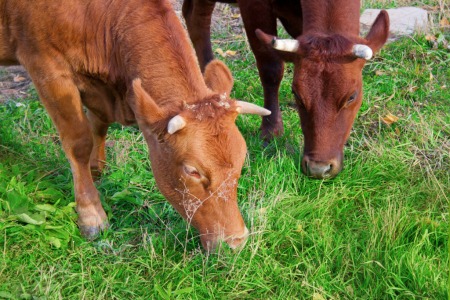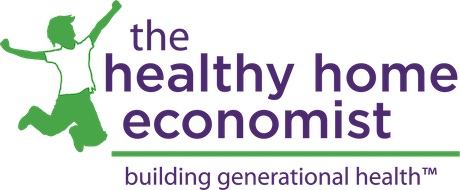
One of the most misguided food myths getting perpetuated nowadays, sadly even by some alternative practitioners, is that dairy is unhealthy to consume.
One reason for the popularity of this modern notion is the skyrocketing incidence of dairy allergies. However, in most cases, these problems are due to the processing (pasteurization/homogenization) of the dairy and/or the unnatural GMO feed given to the cows, not to the dairy itself. When people consume unprocessed dairy from healthy cows grazing on green grass, suddenly the “allergies” disappear. For example, 85% of those who are “lactose intolerant” have absolutely no problem with raw dairy!
Could “lactose intolerance” more aptly be described then as “pasteurization intolerance”? I, for one, definitely think so!
Study of history supports the notion that milk matters and the inclusion of dairy in a healthy, well-rounded diet. The fact is that humans have consumed dairy for thousands of years, even before the advent of agriculture.
Julie Dunne of the University of Bristol, lead author of a groundbreaking archaeological study published in Nature, has found the first direct evidence that prehistoric people of the African Sahara used cattle for their milk many thousands of years ago long before the cultivation of plants in this region.
The initial evidence was found in rock art images illustrating domesticated cattle from the Wadi Imha, in the Tadrart Acacus Mountains, Libyan Sahara. Scientists have dated these images at between 5,000 and 8,000 years old. Ms. Dunne had this to say about the discovery:
Milk is one the very few foods that give us carbohydrates, fats and proteins in one go. So being able to use milk like these people did would have made an enormous difference to their health. It would have provided food for life.
Study of traditional cultures around the world shows the same. Milk not just from cows but from many other mammals such as goat, sheep, camel, reindeer, yak, horses, and even water buffalo have proved an important part of the human diet for far longer than almost any other food.
If the history of milk fascinates you as it does me, you will no doubt enjoy this infographic below sent to me from John Kelle from Online Masters of Public Health. There are numerous factoids about the history of milk to skim through. In addition, 10 good reasons for switching to raw milk from store milk are included for those of you just learning about the benefits of unprocessed, full-fat dairy fresh from the farm.
If you’ve been told that milk is not a healthy food for you and your family to consume, know that history stands firm as a strong and convincing counterpoint to this false, modern notion!
Why Milk Matters
An infographic by the team at Online Masters In Public Health
More Information
A1 and A2 Milk: Do Cow Genetics Even Matter?
The A1 and A2 Factor in Raw Milk









Do you have any recommendations for when and how to transition a child from breastmilk to raw milk?
Yes, I’ve just heard about this A1/ A2 situation.
Yummy milk.
Out of curiosity for my research, was it “raw” dairy you quit or pasteurized/homogenized dairy?
From what I’ve seen, pasteurization is probably the least harmful thing done to milk and milk cows. I think a large number of the allergy issues people have are related to what the cows are being fed and/or to the homogenization process that breaks up the fat globules and releases proteins into the milk that normally wouldn’t be so quickly accessible during digestion.
Good morning. Do you know by any chance where I can get calf, lamb and goat rennet? Thanks
They say in the infograph that milk is at the bottom of the list of contaminated food but do you know what % of milk was a problem prior to pasturization/homoginization? I know the contamination was bassically due to improper storage and distribution. In europe there are dispencing machines, do you know if there were any reports on contamination? Just can’t seem to find anything which is good but maybe i am not looking at the right places 😉 ty
Wonderful troubles totally, you just got a new visitor. What would a person propose of your publish which you designed some days in the past? Any kind of positive?
I think you are absolutely right about milk having an important place in our diets. Pasteurization and homogenization, which both radically change the organisms living in raw milk and its physical structure, are only one part of the “allergy” problem with current industrial milk production. The industrial diet of grain, supplements and hormones is not a natural diet for ruminants like dairy cows, leading to overall poor health for the animals and changed nutritional profile(not for the better) of the resulting dairy. I am sure a life spent mostly confined inside buildings does not result in health, happiness and productivity for cows any more than it does for people.
I have been using only dairy from strictly grass-fed cows for more than a year now. Living in Florida with no dairies nearby, it is nearly impossible to find fresh raw milk. I can get grass-fed un-homogenized milk, yogurt and sour cream. There are many great grass-fed raw milk cheeses available now. The flavor, color and nutrition of these grass-fed dairy products are far better that their commercial counterparts and well worth the additional cost.
This is an important topic for anyone interested in better health. What we eat is important. These ideas need to be put out there and built upon to push back against the FDA, USDA and the mainstream industrial food corporations that try to dictate what we should eat to the detriment of our health and the betterment of their wallets.
Keep up the great work. I feel like dairy, meat, eggs and poultry are at the stage organic vegetables were at twenty years ago. This needs to be a grassroots movement driven by nutritional information and our wallets(what we choose to buy at the store). It is obvious that no amount of evidence from scientific studies is going to sway government agencies or industrial agriculture on these issues – only profit will drive them to change.
I can purchase raw milk both at my local farm and at a store called Real Food Market here in Utah. I’m not sure why they’re not on the list of states that allow legal sales of raw milk in store. I’m going to have to research on this, since I’ve never seen the milk labeled for pet consumption…
I just remembered I had to sign a waiver before purchasing… maybe that’s why?
Well, since Queen Elizabeth II drinks milk & Cleopatra bathed in it…I am sold! I will go out & purchase a gallon of milk…not.
When it said in the Bible “a land flowing w/ milk & honey”…that was a metaphor. :/